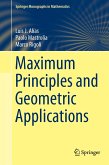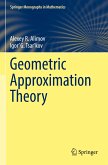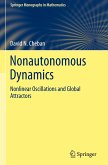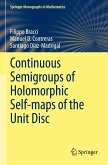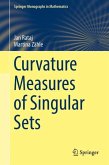This monograph presents an introduction to some geometric and analytic aspects of the maximum principle. In doing so, it analyses with great detail the mathematical tools and geometric foundations needed to develop the various new forms that are presented in the first chapters of the book. In particular, a generalization of the Omori-Yau maximum principle to a wide class of differential operators is given, as well as a corresponding weak maximum principle and its equivalent open form and parabolicity as a special stronger formulation of the latter.
In the second part, the attention focuses on a wide range of applications, mainly to geometric problems, but also on some analytic (especially PDEs) questions including: the geometry of submanifolds, hypersurfaces in Riemannian and Lorentzian targets, Ricci solitons, Liouville theorems, uniqueness of solutions of Lichnerowicz-type PDEs and so on.
Maximum Principles and GeometricApplications is written in an easy style making it accessible to beginners. The reader is guided with a detailed presentation of some topics of Riemannian geometry that are usually not covered in textbooks. Furthermore, many of the results and even proofs of known results are new and lead to the frontiers of a contemporary and active field of research.
In the second part, the attention focuses on a wide range of applications, mainly to geometric problems, but also on some analytic (especially PDEs) questions including: the geometry of submanifolds, hypersurfaces in Riemannian and Lorentzian targets, Ricci solitons, Liouville theorems, uniqueness of solutions of Lichnerowicz-type PDEs and so on.
Maximum Principles and GeometricApplications is written in an easy style making it accessible to beginners. The reader is guided with a detailed presentation of some topics of Riemannian geometry that are usually not covered in textbooks. Furthermore, many of the results and even proofs of known results are new and lead to the frontiers of a contemporary and active field of research.
"This is a very well-written book on an active area of research appealing to geometers and analysts alike, whether they are specialists in the field, or they simply desire to learn the techniques. Moreover, the applications included in this volume encompass a variety of directions with an accent on the geometry of hypersurfaces, while the high number of references dating from 2000 or later are a testimonial of the state of the art developments presented in this volume." (Alina Stancu, zbMATH 1346.58001, 2016)


